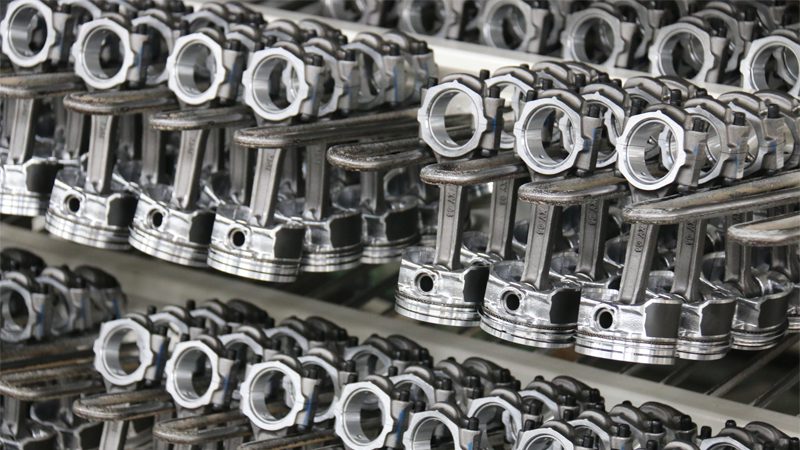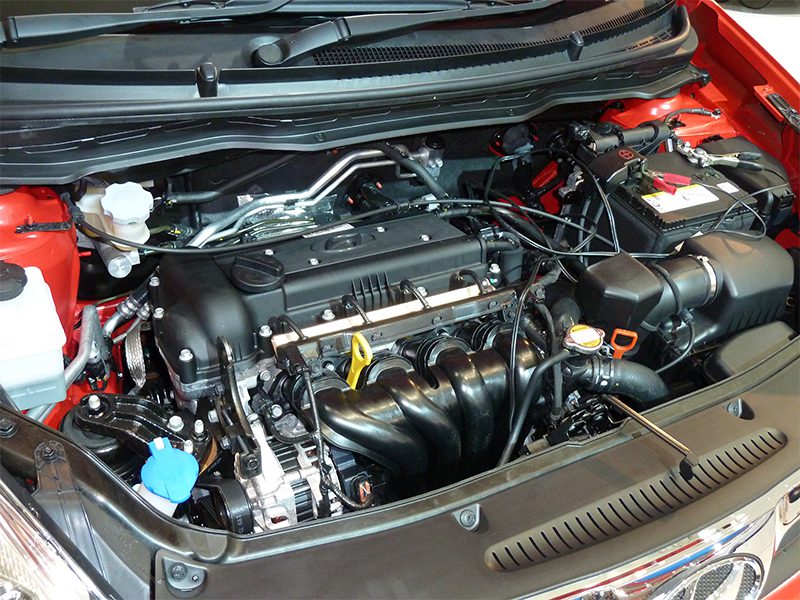The Hyundai Gamma engine is one of the most recognized and widely used engine families from the Korean automaker. Found in popular models like the Hyundai Elantra, Accent, i30, and Kia Soul, it’s known for its compact size, fuel efficiency, and solid all-around performance.
Whether you’re a Hyundai owner trying to learn more about what’s under your hood, a mechanic hunting for detailed specs, or someone exploring engine replacement options, this guide has you covered. We’ll break down the essentials — from key specifications and known issues to part compatibility and cost-effective replacement tips.

What Is the Hyundai Gamma Engine?
Introduced in the mid-2000s, the Hyundai Gamma engine was developed as a lightweight, fuel-efficient powertrain for compact vehicles. Designed with urban driving in mind, it prioritizes smooth performance, reduced emissions, and reliable day-to-day operation.
The Gamma family features inline-4 aluminum engines, primarily available in 1.4L and 1.6L displacements. These engines incorporate advanced technologies such as DOHC (dual overhead camshafts), CVVT (Continuously Variable Valve Timing), and in later models, GDI (Gasoline Direct Injection).
Gamma I vs. Gamma II: What’s the Difference?
Over time, Hyundai released two generations of the Gamma engine:
| Generation | Typical Years | Engine Codes | Key Improvements |
|---|---|---|---|
| Gamma I | 2006–2014 | G4FA, G4FC, G4FD, G4FJ | Original architecture with MPI, GDI, and T-GDI systems; early emissions compliance |
| Gamma II | 2015–present | G4FG, G4FL, G4FM | Improved NVH (noise, vibration, harshness), better fuel efficiency, Euro 6 compliance, refined turbo tuning |
Gamma I laid the groundwork with proven reliability and widespread adoption in compact cars. Gamma II, introduced around 2015, built on that foundation with refinements aimed at improved emissions performance, smoother drivability, and enhanced durability—particularly in turbocharged versions like the G4FM used in sportier models.
Gamma Engine Variants Overview
| Engine Variant | Fuel System | Engine Code | Displacement | Power Output | Used In |
|---|---|---|---|---|---|
| Gamma 1.4 MPI | Multi-Point Injection | G4FA | 1.4L | ~100 hp | Hyundai i20, Hyundai Accent |
| Gamma 1.6 MPI | Multi-Point Injection | G4FC | 1.6L | ~121 hp | Hyundai Elantra, Kia Rio |
| Gamma 1.6 GDI | Gasoline Direct Injection | G4FD | 1.6L | ~135 hp | Hyundai Accent, Hyundai Veloster |
| Gamma 1.6 T-GDI | Turbocharged GDI | G4FJ | 1.6L | ~138–201 hp | Kia Soul Turbo, Hyundai Veloster Turbo, Kia Forte GT |
| Gamma II 1.6 GDI | Gasoline Direct Injection | G4FG | 1.6L | ~132 hp | Hyundai Accent (later models), Kia Rio |
| Gamma II 1.6 MPI | Multi-Point Injection | G4FL | 1.6L | ~121 hp | Hyundai Venue, Accent, Kia Rio (newer models) |
| Gamma II 1.6 T-GDI | Turbocharged GDI | G4FM | 1.6L | ~204 hp | Hyundai Veloster N-Line, Kia Forte GT (high-output variant) |
These engines have earned a solid reputation for their reliability, fuel efficiency, and cost-effectiveness, making them a popular choice across Hyundai and Kia’s compact lineup worldwide.

Note: Most Gamma engines use the G4F-series code (e.g., G4FA, G4FC, G4FD, G4FJ, G4FG, G4FL, G4FM), where G stands for gasoline, 4 for four cylinders, and F identifies the Gamma engine family.
You may also encounter less common regional variants like G4HA, G4HC, G4HD, and G4KH, which are typically localized versions of standard Gamma engines used in markets such as India or Latin America. While they share similar architecture, always confirm the engine code before sourcing parts to ensure compatibility.
Hyundai Gamma Engine Specs
The Hyundai Gamma engine family comes in several variants across two generations, but most share core design features aimed at optimizing efficiency and performance. Below is a general overview of the technical specifications:
| Specification | Details |
|---|---|
| Engine Configuration | Inline 4-cylinder |
| Displacement | 1.4L and 1.6L |
| Valvetrain | DOHC with CVVT (Continuously Variable Valve Timing) |
| Block/Head Material | Aluminum |
| Fuel System | MPI, GDI, or T-GDI (Turbocharged Gasoline Direct Injection) |
| Power Output | 100 – 204 hp (depending on variant and generation) |
| Torque Output | 133 – 265 Nm (higher values in turbocharged Gamma II versions) |
| Compression Ratio | 10.5:1 (MPI), up to 11.0:1 (GDI), varies slightly by model/tuning |
These specs reflect a broad range of setups, from economical daily drivers to sportier, turbocharged trims. Despite differences between Gamma I and Gamma II, all variants prioritize a balance of lightweight construction and modern engine technology for smooth and efficient operation.
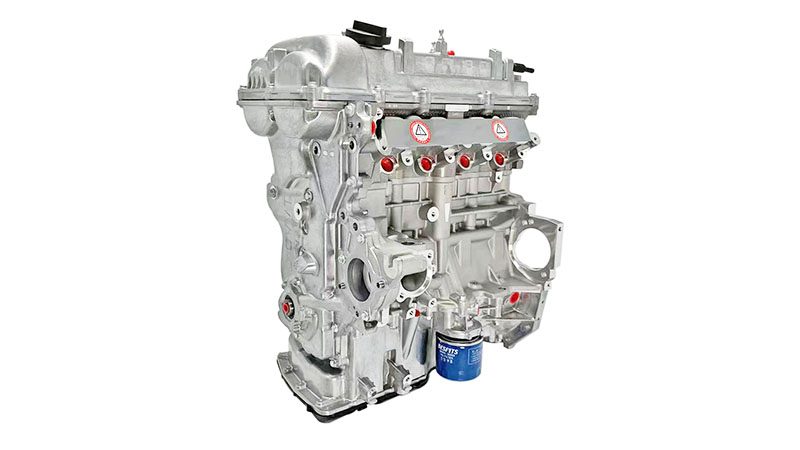
Common Hyundai Gamma Engine Problems
While the Hyundai Gamma engine family is generally known for its reliability, no engine is completely trouble-free — especially as mileage climbs or maintenance is skipped. Below are some of the most commonly reported issues, particularly in older or heavily used models:
- Excessive Oil Consumption
Some Gamma engines are known to burn oil over time, especially if routine maintenance like oil changes is delayed. This can lead to low oil levels and potential internal wear if left unchecked. - Timing Chain Tensioner Wear
Premature wear of the timing chain tensioner is a known concern in certain models. Symptoms include rattling sounds on startup and, in severe cases, misalignment or engine damage if the chain jumps timing. - Carbon Build-Up (GDI Engines)
Gamma engines with Gasoline Direct Injection (GDI), such as the G4FD and G4FG, are prone to carbon deposits forming on intake valves. This can lead to rough idling, reduced fuel efficiency, and sluggish throttle response. - Cooling System Failures
Issues like radiator leaks, weak water pumps, or thermostat malfunctions can cause overheating — especially in older models or in hot climates. Persistent overheating can damage the cylinder head and head gasket. - Turbocharger Degradation (T-GDI Engines)
In turbocharged variants like the G4FJ and G4FM, worn turbochargers may result in reduced boost, sluggish acceleration, or oil contamination. Delayed oil changes are often a contributing factor.
Tip: Many of these problems can be prevented — or significantly delayed — with regular oil changes, the use of high-quality fluids, and timely replacement of wear-prone components.
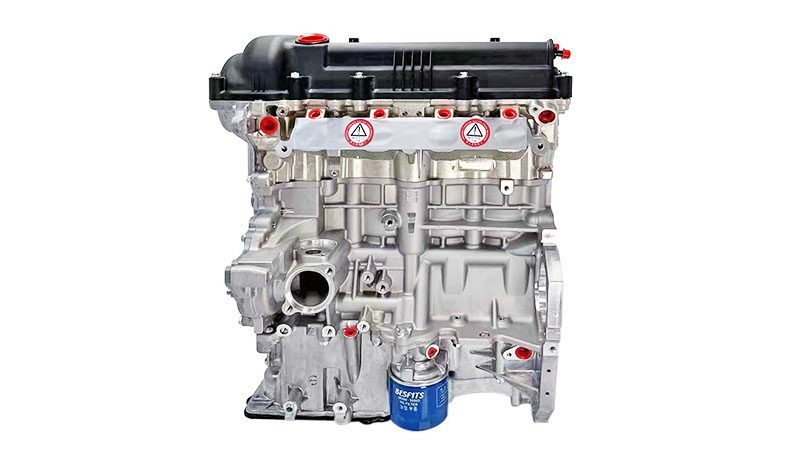
Gamma Engine vs. Other Hyundai Engines
Hyundai has developed several engine families to serve different vehicle categories and performance needs. Here’s how the Gamma engine stacks up against other key Hyundai engines in terms of size, application, efficiency, and complexity:
| Feature | Gamma | Theta | Nu | Alpha |
|---|---|---|---|---|
| Typical Displacement | 1.4L – 1.6L | 2.0L – 2.4L | 1.8L – 2.0L | 1.5L – 1.6L |
| Target Vehicles | Compact cars (Accent, Rio, Elantra) | Midsize sedans, SUVs (Sonata, Tucson) | Compact/midsize cars (Elantra, i30) | Early Hyundai/Kia compacts |
| Fuel Efficiency | Excellent | Moderate | Good | Average |
| Power Output | 100 – 204 hp | 160 – 276 hp | 132 – 161 hp | 92 – 105 hp |
| Technology | CVVT, GDI, T-GDI | CVVT, GDI, Dual CVVT, Turbo in 2.0T | CVVT, GDI, Dual CVVT | Basic SOHC/DOHC |
| Emissions Compliance | Euro 4 – Euro 6 | Euro 4 – Euro 6 | Euro 5 – Euro 6 | Mostly Euro 3 |
| Ease of Maintenance | Easy | Moderate to complex | Moderate | Simple |
| Production Period | 2006 – Present | 2004 – Present | 2011 – Present | 1990s – Mid-2000s |
In summary:
- Gamma is ideal for compact cars where fuel economy, lightweight design, and ease of maintenance matter most.
- Theta serves higher-performance needs in midsize sedans and SUVs, often with turbocharged variants.
- Nu offers a middle ground, balancing displacement with smoother performance and modern tech.
- Alpha, Hyundai’s earlier compact engine family, has been phased out in favor of more advanced and efficient designs like Gamma.
Gamma Engine Replacement Cost & Parts Availability
If your Gamma engine is nearing the end of its service life or has suffered a major failure, replacement may be the most cost-effective solution — especially for older vehicles where engine repair costs can quickly add up.
Full Engine Replacement Cost
The cost of replacing a Hyundai Gamma engine depends on several factors, including:
- Whether the engine is new, used, or rebuilt
- Your location and labor costs
- The specific engine code and whether it’s Gamma I or Gamma II
In general, a complete Gamma engine replacement will range from $2,000 to $4,000, including parts and labor. Turbocharged engines (like the G4FJ or G4FM) often cost more due to their added complexity and performance components.

Commonly Replaced Gamma Engine Parts
If a full replacement isn’t necessary, many issues can be resolved with high-quality individual components. Some of the most frequently replaced Gamma engine parts include:
- Cylinder heads – Often replaced due to overheating or cracking
- Timing chain kits – Including chain, tensioner, and guides
- Pistons and piston rings – Worn due to high mileage or oil consumption
- Gaskets and seals – Especially the head gasket and valve cover gasket
- Crankshafts – Usually in cases of severe engine wear or oil starvation
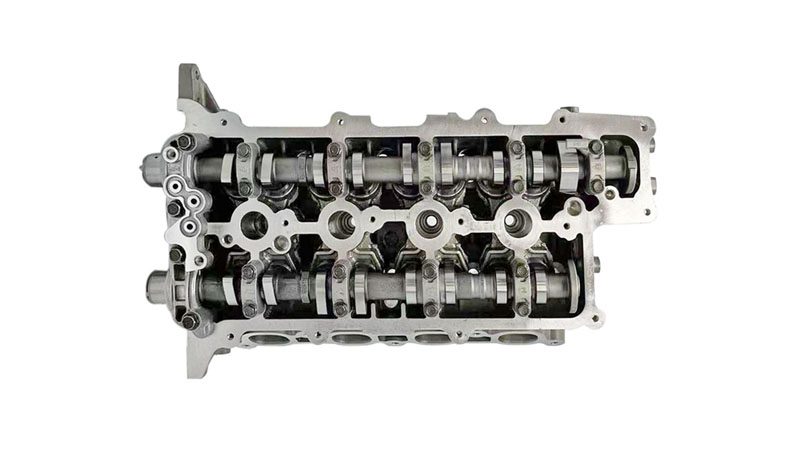
Tip: Always confirm the exact engine code (e.g., G4FA, G4FG, G4FJ) before purchasing parts. Even engines with the same displacement can have different internal designs depending on fuel system, generation, and market.
Conclusion
Hyundai Gamma engines are widely adopted and dependable powertrains found in many compact Hyundai and Kia vehicles. Understanding their specifications and common issues is essential for accurate repairs, reliable replacements, and long-term performance.
At Nanjing Woda Auto Technology Co., Ltd., we specialize in supplying high-quality engine components — including parts for Hyundai Gamma engines — to global B2B clients such as wholesalers, distributors, workshops, and fleet operators.
With over 25 years of industry experience and exports to more than 100 countries, we offer a comprehensive range of products, including cylinder heads, crankshafts, camshafts, timing kits, and complete engines.
What we offer:
- Competitive bulk pricing
- Fast international shipping
- Customized sourcing and technical support
- Reliable after-sales service
Ready to grow your business? Contact us or browse our catalog to request a quote and explore our full engine parts selection.
